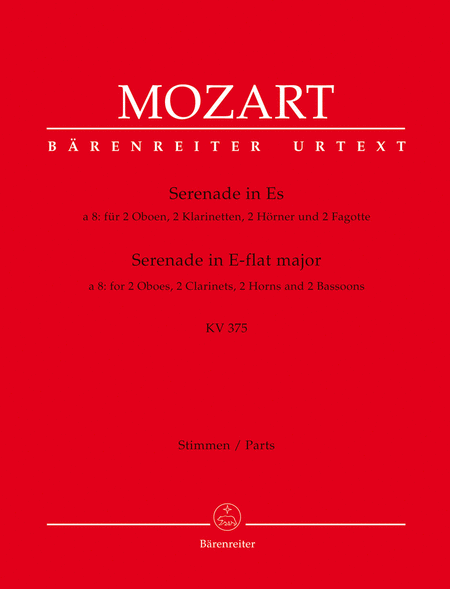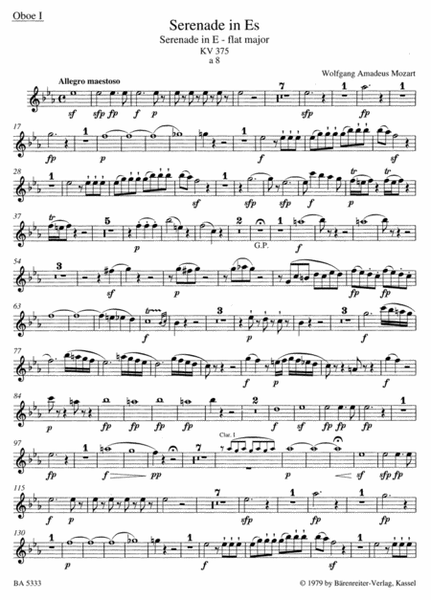Serenade for two Oboes, 2 Clarinets, 2 Horns and 2 Bassoons E flat major KV 375
-
Ships in 1 to 2 weeks
Details
Description
SKU: BA.BA05333
Composed by Wolfgang Amadeus Mozart. Edited by Daniel N. Leeson and Neal Zaslaw. This edition: urtext edition. Stapled. Barenreiter Urtext. Set of parts. K. 375. 7/7/8/8/7/7/7/7 pages. Duration 25 minutes. Baerenreiter Verlag #BA05333. Published by Baerenreiter Verlag (BA.BA05333).ISBN 9790006502660. 31 x 24.3 cm inches. Key: E-flat major.
The Serenade in E-flat, K.375, exists in two versions, one for two clarinets, two horns and two bassoons, and another for the same forces plus two oboes, forming an octet.
From Mozart himself we know a fair amount about the occasion that led to the first, six-instrument version of this work and about its early performances. Written for the sister-in-law of the court painter Hickl, it probably originated toward the end of September or the beginning of October in 1781 and was first performed on 15 October, the name-day of St. Theresa.
The octet version probably arose in the summer of the following year. It is far more than a mechanical expansion of the sextet with the oboes merely reinforcing the clarinets colla parte. Not only did Mozart take advantage of the occasion to make changes in the articulation and the dynamics, he also altered the work’s melodic substance and formal design. The two additional high-register instruments allowed him to achieve more subtle distinctions and gradations of timbre, thereby enabling him, for example, to vary the timbral homogeneity of the two clarinets. The opportunity arose to divide melodic phrases among the clarinets and oboes or to make them more brilliant and incisive by doubling them at the unison or octave.
About Barenreiter Urtext
What can I expect from a Barenreiter Urtext edition?
MUSICOLOGICALLY SOUND
- A reliable musical text based on all available sources
- A description of the sources
- Information on the genesis and history of the work
- Valuable notes on performance practice
- Includes an introduction with critical commentary explaining source discrepancies and editorial decisions
... AND PRACTICAL
- Page-turns, fold-out pages, and cues where you need them
- A well-presented layout and a user-friendly format
- Excellent print quality
- Superior paper and binding


 Share
Share